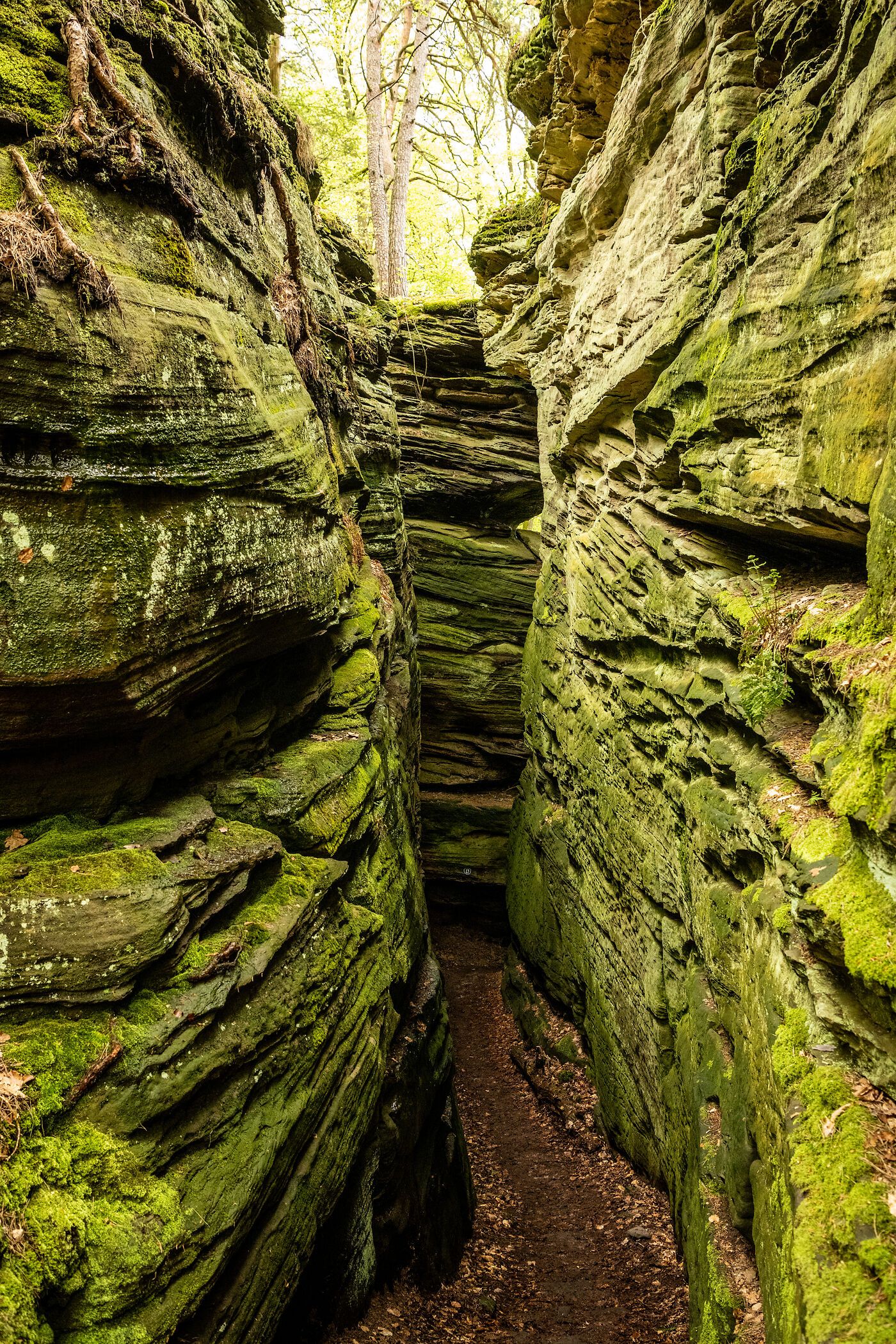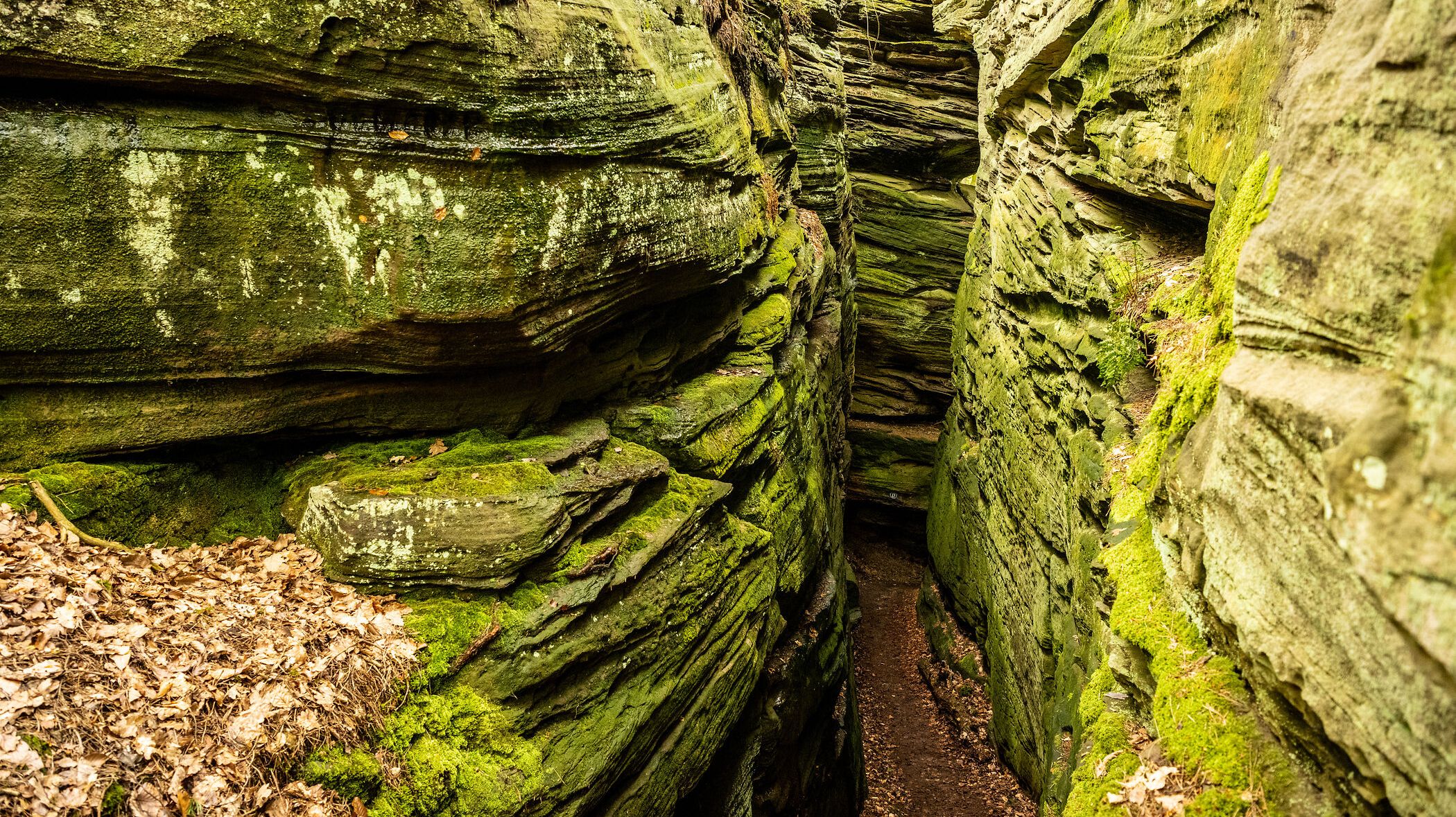

The elemental force of the earth provides support
In the south of the Eifel, you walk on an earth that has its origins in the Devonian period, at a time when a warm tropical ocean covered the Eifel. The cliffs and sediments of the primeval ocean were caked into colorful sandstone, and over the millennia wind and rain carved deep gorges, steep rock faces and mighty rapids.
The Devil's Gorge near Ernzen is a particularly impressive legacy of the geological processes in the Eifel. It was formed around 10,000 years ago during the last ice age. The majestic rocks provide support. Nothing can easily knock them over and if you hold your hand against the cool rocks, you can feel the power of the earth.
The Southern Eifel is not just rough and rocky: rivers and streams meander through meadows and valleys, all heading towards one destination, the Moselle. The landscape is reminiscent of a green bedspread in many shades of color, loosely thrown over the land. The fields are fertile, the climate somewhat milder than in the harsh regions of the Eifel.
People have left their mark over the centuries. Even the Romans settled in the Eifel and left behind their ornate buildings and roads. The proximity to Trier, a center of antiquity and oldest town of germay, has left its mark on the Eifel. Archaeological finds and historical sites such as Roman villas and streets bear witness to the past and can be visited.
One of the best-known products from the Eifel is the beer brewed in Bitburg, the Bitburger Premium Pils. A small proportion of the hops used by the world-famous brewery comes from Holsthum, in the south of the Eifel. Time to devote ourselves to the culinary delights of the Eifel.
Which destinations you shouldn't miss in the land of rocks: